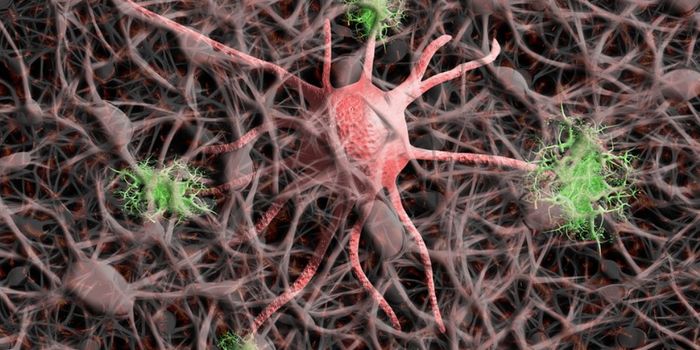Detecting Leukemia Before it Starts Growing
Researchers have found ways to identify people who may develop an aggressive type of blood cancer, acute myeloid leukemia (AML) much earlier than we can with current tools - even in people who have no symptoms. This work has found genetic changes that can reveal potential cases of AML so that people at risk could be monitored more carefully. It may also be possible one day to reduce the likelihood that those people will eventually get cancer.
There are no new treatment options for AML, which can affect people at any age. This kind of cancer grows in the bone marrow, disrupting the normal production of blood cells. This can lead to bleeding and fatal infections. If patients respond to the treatment, they can recover, with some even being cured. But most are not.
Researchers at the European Bioinformatics Institute (EMBL-EBI), the Wellcome Sanger Institute and international collaborators reported this study in Nature. They utilized data from the European Prospective Investigation into Cancer and Nutrition (EPIC) study to find the genetic changes that occur in AML patients before cancer starts growing. EPIC gathered patient samples over many years; data from 124 AML patients and 676 people without the disease was available.
“Acute myeloid leukemia often appears very suddenly in patients, so we were surprised to discover that its origins are generally detectable more than five years before the disease develops,” explained co-first author Grace Collord of the Wellcome Sanger Institute and the University of Cambridge. “This provides proof-of-principle that it may be possible to develop tests to identify people at a high risk of developing AML.”
The investigators zeroed in on genes that have known associations with AML, finding those genes carrying mutations frequently in AML patients, and in others sometimes too. They found that the AML patients carried more mutations, and had more mutated blood cells.
“We needed a large number of samples to get accurate results, and this study was only possible through a collaboration with the European Prospective Investigation in Cancer and Nutrition (EPIC),” noted senior author Moritz Gerstung, EMBL-EBI, Research Group Leader. “The generosity of the participants in sharing their data and blood samples allowed us to discover a pattern of genetic changes that is established long before AML appears, and which confers greater risk when more cells are affected by genetic change. This genetic lag may also be found in other blood cancers, and this would open new avenues for further research that could help many people in the future.”
Every year, around five of every one hundred thousand individuals will develop AML or a similar cancer; that makes diagnosing the disease accurately very important. The findings in this study will have to be confirmed but show there is potential for vastly improving diagnostics, with improving treatment and preventing this cancer as the ultimate goal.
“Our study provides for the first time evidence that we can identify people at risk of developing AML many years before they actually develop this life-threatening disease,” concluded one of the project leaders, George Vassiliou of the Wellcome Sanger Institute, the Wellcome-MRC Cambridge Stem Cell Institute, and Consultant Hematologist at Cambridge University Hospitals NHS Trust. “We hope to build on these findings to develop robust screening tests for identifying those at risk and drive research into how to prevent or stall progression towards AML. Our aspiration is that one day, AML prevention would provide a compelling alternative to treatment.”
-
MAY 07, 2024Is It Anti-RNP or Anti-Sm/RNP?
- See More
-
APR 30, 2024Immuno-Oncology Virtual Event Series 2024
-
MAY 07, 20243rd International Biosecurity Virtual Symposium
-
JUN 06, 2024The Future of Scientific Conferencing
- See More

















































